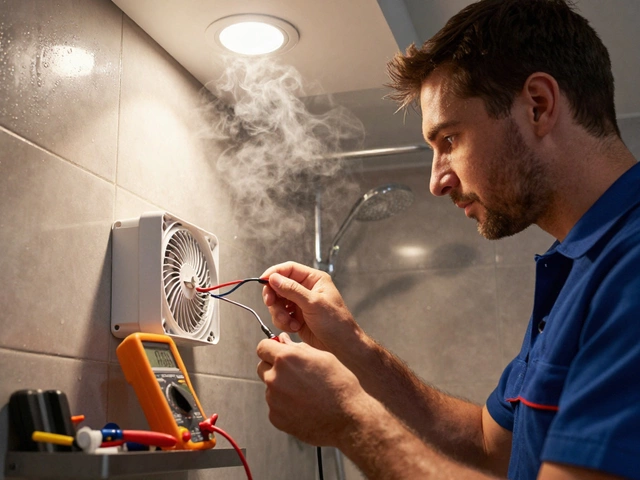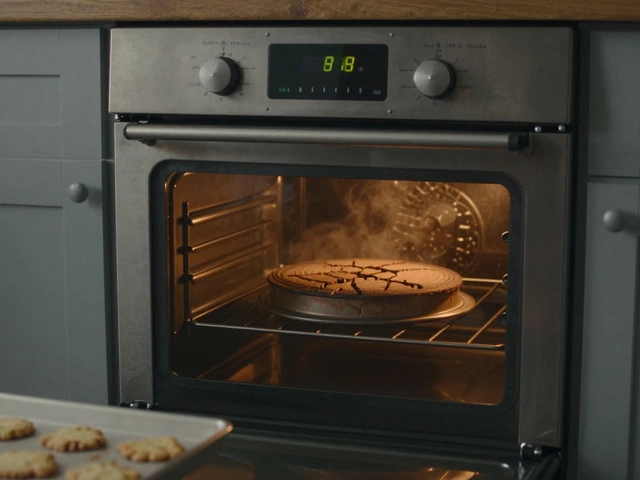Fan Maintenance Tips: Keep Your Extractor & Ceiling Fans Running Smoothly
Fans are the quiet heroes that move air, stop mold, and stop weird smells. When they glitch, you notice it right away – odd noises, wobbling blades, or no airflow at all. The good news? Most fan problems are fixable with a few minutes of work and the right know‑how. Below are the everyday steps that keep your extractor, ceiling, or standing fan humming for years.
1. Clean the blades and housing
Dust is the number one enemy of any fan. Over time it builds up on blades, motor vents, and the grill, causing the motor to overheat and the blades to wobble. First, turn the fan off and unplug it. Use a soft brush or an old pillowcase to slide over the blades – this catches dust without scratching. For the grill, a damp cloth with mild dish soap works fine; rinse with a clean cloth and let everything dry completely before you plug it back in.
2. Check the motor and bearings
The motor is the heart of the fan. Listen for humming or grinding sounds – those are warning signs. Open the housing (most ceiling fans have a simple snap‑off cover). Look for loose screws, worn‑out bearings, or any burnt smell. If the shaft feels gritty, a few drops of light machine oil can revive it. Tighten any loose screws, but don’t over‑tighten – you don’t want to strip the threads.
For extractor fans in kitchens or bathrooms, also inspect the vent pipe. A blocked pipe reduces suction and forces the motor to work harder. A quick run of a garden hose through the pipe clears most debris. If you notice water pooling, the pipe may be incorrectly angled; a slight upward slope toward the exterior is the ideal.
When you’ve finished cleaning and lubricating, reassemble the fan, plug it back in, and run it on the highest speed. If the noise persists or the fan still doesn’t spin, the motor may be failing and it’s time to call a professional.
3. Safety checks before you start
Never work on a fan that’s still connected to power. Even ceiling fans that look “off” can have residual charge in the capacitor. Use a voltage tester if you’re unsure. Wear gloves when handling blades – a broken blade can cut you or damage the motor. And keep kids and pets away from the work area.
Another quick safety tip: make sure the fan’s mounting bracket is secure. A loose bracket can cause the whole unit to wobble, which leads to cracked blades and eventually a motor overload. Tighten the mounting bolts with a screwdriver or a drill, but check the manufacturer’s torque specs if you have them.
4. When to call Hinckley Home Appliance Repair Services
If you’ve tried cleaning, lubricating, and tightening everything and the fan still won’t start, it’s probably a wiring or motor issue that needs a qualified technician. Same goes for any burning smell, sparks, or a tripped breaker – those are signs of electrical trouble that can be dangerous to handle yourself.
Our Hinckley team knows every make and model of extractor, ceiling, and standing fans. We can diagnose motor faults, replace worn‑out parts, and get your fan back to full speed. Plus, we’ll give you a quick rundown of how to keep it in top shape for years.
Don’t wait for a small problem to become a big one. A quick clean and a check of the motor can add years to your fan’s life, and when you need help, we’re just a call away.
6 June 2025
·
0 Comments
Wondering how long it takes to fix an extractor fan? This article breaks down the steps, what can slow things down, and ways to speed up repairs. Figure out if you’re dealing with a ten-minute job or something that’ll take hours. Get real tips to save time, avoid rookie mistakes, and know when to call in the pros. Simple, straight-talking advice for anyone facing a noisy or broken fan.
Read more






